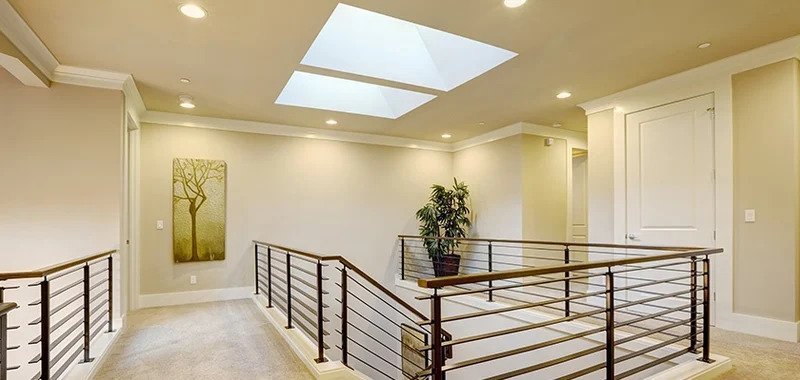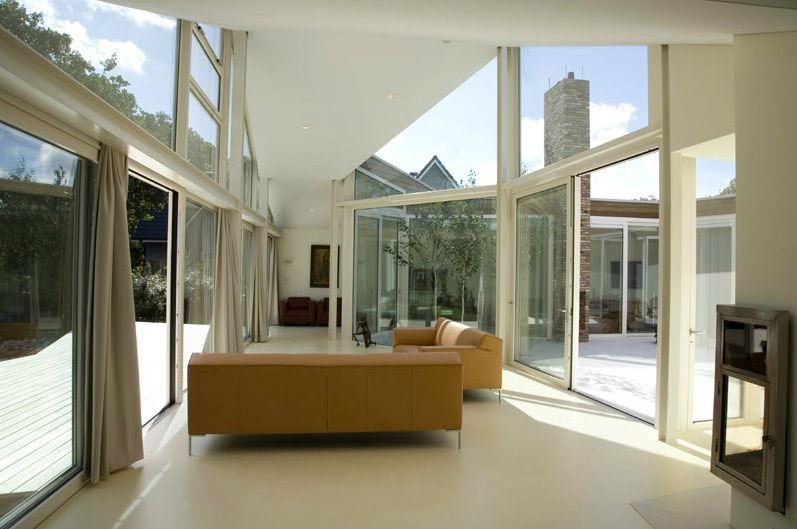In the realm of architectural design and home aesthetics, the role of natural light is indispensable. The way sunlight filters through windows can transform a space, influencing mood, productivity, and overall well-being. However, this symbiotic relationship between natural light and the need for glass replacement is often underestimated. In this blog, as Solex Glass & Mirrors help you unearth into the intricate dance of light and glass, we uncover the profound impact that windows and their upkeep can have on our living spaces. From energy efficiency to the ambiance it creates, the connection between natural light and glass replacement is a story of both practicality and poetics.
The Essence of Natural Light: A Vital Design Element
Natural light is more than just a practical consideration; it’s a fundamental aspect of architectural design. Well-lit spaces are not only aesthetically pleasing but also contribute to the physical and mental well-being of occupants. The advantages are manifold – from reducing energy consumption to improving mood and boosting productivity.
Large, strategically placed windows have become a hallmark of modern architecture, allowing a seamless integration of the outdoors with indoor living spaces. The design philosophy often revolves around maximizing the entry of natural light to reduce reliance on artificial lighting during daylight hours.

However, maintaining this delicate balance requires an understanding of the pivotal role that glass plays in the equation. Over time, windows may lose their transparency, develop cracks, or become inefficient in insulation, necessitating the replacement of glass panels. This is where the connection between natural light and glass replacement becomes apparent.
Energy Efficiency: A Dance of Light and Insulation
One of the primary considerations in the relationship between natural light and glass replacement is energy efficiency. Windows are not merely portals for sunlight; they are also critical elements in a building’s insulation system. The type and condition of glass directly impact a structure’s ability to retain or repel heat.
Outdated or damaged windows can result in energy wastage, as they may allow for the seepage of warm air during winters and cool air during summers. This, in turn, compels homeowners and businesses to rely more on heating, ventilation, and air conditioning (HVAC) systems, driving up energy costs.
Opting for energy-efficient glass replacement solutions, such as double or triple-pane windows with low-emissivity coatings, can significantly enhance a building’s insulation capabilities. This not only reduces energy consumption but also ensures that the influx of natural light remains optimal.
Preserving Aesthetics: The Visual Symphony of Light
Beyond functionality, the aesthetics of natural light are a crucial aspect of architectural design. Sunlight, with its ever-changing qualities, can turn a mundane space into a dynamic and visually engaging environment. The interplay of light and shadow creates a living canvas within our homes and workplaces.
However, when windows are marred by scratches, discoloration, or other forms of damage, they hinder this visual symphony. Glass replacement then becomes not just a necessity for maintaining energy efficiency but also a means to preserve the inherent beauty of natural light.
Modern glass technologies offer a range of solutions, from tinted glass to smart glass that can dynamically adjust its transparency based on external conditions. These innovations not only address practical concerns but also contribute to the overall aesthetic appeal of a space.
Human-centric Design: Impact on Well-being
The connection between natural light and glass replacement extends beyond the physical attributes of a building; it also has profound implications for human well-being. Exposure to natural light has been linked to improved mood, increased productivity, and better sleep quality.
When windows are inadequately maintained or fail to harness the benefits of natural light, occupants may experience a diminished connection to the outdoors. This can lead to feelings of confinement and have adverse effects on mental health. Glass replacement, therefore, becomes a crucial step in ensuring that living and working spaces are conducive to the well-being of their inhabitants.
Technological Innovations: Paving the Way for Sustainable Solutions
In recent years, the field of glass replacement has witnessed remarkable technological advancements that align with the growing emphasis on sustainability. Smart glass, for instance, allows for dynamic control of light and privacy, reducing the need for external shading devices or curtains.
Furthermore, the development of self-healing glass, which can repair minor cracks on its own, presents a promising solution to the longevity of windows. These innovations not only address the immediate concerns of glass replacement but also contribute to the long-term sustainability of buildings.\
The Future of Illumination: Where Expertise Meets Innovation
As we envision the future of architectural design, the interplay between natural light, glass replacement, and professional installation services takes center stage. The expertise of installers becomes a bridge between functional necessity and artistic expression, ensuring that the illumination of spaces is not just a technical requirement but a design philosophy.

In this collaborative narrative, innovation becomes the guiding light. The evolution of glass technologies and installation techniques opens doors to possibilities previously unexplored. From smart mirrors that integrate seamlessly with home automation systems to structural glass installations that redefine spatial boundaries, the future of illumination is shaped by the marriage of expertise and innovation
Conclusion: Illuminating Tomorrow with Glass Replacement
As we navigate the intricate connection between natural light and glass replacement, it becomes evident that these elements are not mutually exclusive but, in fact, deeply intertwined. The windows of a building serve as the conduits through which sunlight breathes life into our spaces, influencing everything from our mood to our energy bills.
The evolution of glass replacement from a functional necessity to a design imperative reflects the evolving priorities in architecture. The emphasis on energy efficiency, aesthetics, and human-centric design has propelled the industry to innovate, offering solutions that not only rectify issues but also contribute to a sustainable and visually enchanting future.
In the dance of light and glass, we find the essence of architectural harmony. Recognizing the profound impact of natural light on our lives prompts us to invest not just in windows but in the very quality of the light that fills our spaces. As we look to the future, the connection between natural light and glass replacement will continue to shape the way we build, live, and experience the world around us.
FAQ’s
Can you get natural light through glass?
Yes, glass allows natural light to penetrate interiors, creating well-lit spaces. Properly maintained windows ensure an optimal connection to the outdoors, enhancing both aesthetics and well-being.
Can artificial light replace natural light?
While artificial light can illuminate spaces, it doesn’t fully replicate the spectrum and benefits of natural light. Natural light offers dynamic qualities and influences circadian rhythms, contributing to a healthier and more vibrant environment. Striking a balance between both types of light sources is key for optimal indoor lighting.
Why is natural light important over artificial light?
Natural light is crucial as it provides a full spectrum of illumination, positively impacting mood and productivity. Exposure to natural light supports circadian rhythms, promoting better sleep and overall well-being. Unlike artificial light, natural light is dynamic, creating a visually appealing and energizing environment.
How do you replace natural light?
Natural light cannot be replaced, but it can be enhanced through strategic design. Maximize windows and use mirrors to amplify light, creating a brighter atmosphere. While artificial lighting can supplement, preserving access to natural light is essential for its holistic benefits.
How does glass work with light?
Glass interacts with light by transmitting, reflecting, and refracting it. Its transparent nature allows light to pass through, illuminating spaces. The design of glass, including coatings and textures, further influences how light behaves, shaping the ambiance within a given environment.
